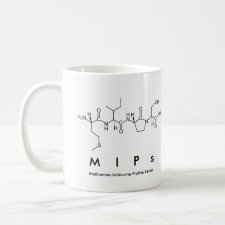
Authors: Qian LW, Sun JX, Hou C, Yang JF, Li YW, Lei D, Yang MX, Zhang SF
Article Title: Immobilization of BSA on ionic liquid functionalized magnetic Fe3O4 nanoparticles for use in surface imprinting strategy.
Publication date: 2017
Journal: Talanta
Volume: 168
Page numbers: 174-182.
DOI: 10.1016/j.talanta.2017.03.044
Alternative URL: http://www.sciencedirect.com/science/article/pii/S0039914017303466
Abstract: Combining template immobilization with surface imprinting technology is an effective strategy to overcome the difficulties associated with macromolecular template removal and to achieve high specific recognition ability. In this work, ionic liquid functionalized Fe3O4 nanoparticles were prepared via a simple two-step modification process and were used as substrate to immobilize bovine serum albumin (BSA). The zeta potential study revealed immobilization of BSA on the nanoparticles through multiple interactions, and the immobilization capacity was about nine times higher compared with that of bare Fe3O4. Subsequently, dopamine was utilized as functional monomer to prepare BSA surface imprinted nanoparticles. Fourier transform infrared spectroscopy, thermo-gravimetric analysis and transmission electron microscopy verified the successful preparation of BSA imprinted nanoparticles with core-shell structure. The influence of imprinted layer thickness on recognition ability of imprinted nanoparticles was investigated, and the results suggested that 20 nm was an optimum thickness to achieve the best recognition ability. The adsorption isotherm studies showed that the imprinted nanoparticles had a significantly higher adsorption capacity and stronger binding affinity than the non-imprinted ones. Furthermore, the selective as well as the competitive adsorption studies revealed higher selectivity and recognition ability of the imprinted nanoparticles for BSA. Therefore, the proposed strategy is an effective way to obtain protein imprinted polymers with high adsorption capacity and good recognition ability, thus would be beneficial for the further development and application of protein imprinting technology
Template and target information: protein, bovine serum albumin, BSA
Author keywords: protein imprinted polymers, Ionic liquids modification, protein immobilization, magnetic nanoparticles



Join the Society for Molecular Imprinting

New items RSS feed
Sign-up for e-mail updates:
Choose between receiving an occasional newsletter or more frequent e-mail alerts.
Click here to go to the sign-up page.
Is your name elemental or peptidic? Enter your name and find out by clicking either of the buttons below!
Other products you may like:
 MIPdatabase
MIPdatabase









